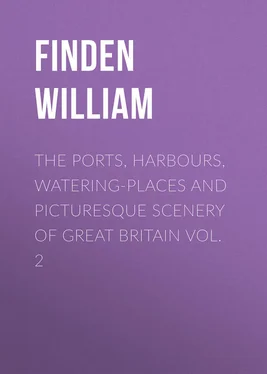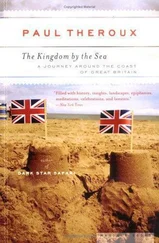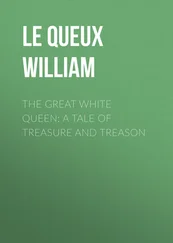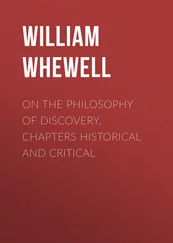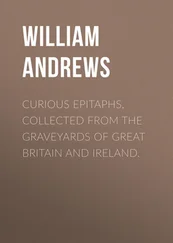William Finden - The Ports, Harbours, Watering-places and Picturesque Scenery of Great Britain Vol. 2
Здесь есть возможность читать онлайн «William Finden - The Ports, Harbours, Watering-places and Picturesque Scenery of Great Britain Vol. 2» — ознакомительный отрывок электронной книги совершенно бесплатно, а после прочтения отрывка купить полную версию. В некоторых случаях можно слушать аудио, скачать через торрент в формате fb2 и присутствует краткое содержание. Жанр: visual_arts, foreign_antique, foreign_prose, на английском языке. Описание произведения, (предисловие) а так же отзывы посетителей доступны на портале библиотеки ЛибКат.
- Название:The Ports, Harbours, Watering-places and Picturesque Scenery of Great Britain Vol. 2
- Автор:
- Жанр:
- Год:неизвестен
- ISBN:нет данных
- Рейтинг книги:3 / 5. Голосов: 1
-
Избранное:Добавить в избранное
- Отзывы:
-
Ваша оценка:
- 60
- 1
- 2
- 3
- 4
- 5
The Ports, Harbours, Watering-places and Picturesque Scenery of Great Britain Vol. 2: краткое содержание, описание и аннотация
Предлагаем к чтению аннотацию, описание, краткое содержание или предисловие (зависит от того, что написал сам автор книги «The Ports, Harbours, Watering-places and Picturesque Scenery of Great Britain Vol. 2»). Если вы не нашли необходимую информацию о книге — напишите в комментариях, мы постараемся отыскать её.
The Ports, Harbours, Watering-places and Picturesque Scenery of Great Britain Vol. 2 — читать онлайн ознакомительный отрывок
Ниже представлен текст книги, разбитый по страницам. Система сохранения места последней прочитанной страницы, позволяет с удобством читать онлайн бесплатно книгу «The Ports, Harbours, Watering-places and Picturesque Scenery of Great Britain Vol. 2», без необходимости каждый раз заново искать на чём Вы остановились. Поставьте закладку, и сможете в любой момент перейти на страницу, на которой закончили чтение.
Интервал:
Закладка:
Matlock, however, though so friendly to the invalid, is neither gloomy nor isolated; but to those who delight to mix in the gayer scenes of artificial life, it possesses every attraction which refined society and social intercourse can bestow. He who seeks health, and he who seeks relaxation and pleasure, may enjoy every facility which science or fashion can offer; and nowhere are the amusements better conducted, or the rules of society more strictly observed, than at Matlock.
The environs embrace some of the most striking and romantic scenery, as well as historical sites, in England; and so close at hand that many of the finest features enter into the same picture. Washed by the crystal Derwent and finely wooded, – with rocks, and fountains, and precipices, scattered at random through the charming landscape, – the visitor is tempted to pass much of his time in the open air, which accelerates the cure the water has begun. Romantic foot-paths, meandering along the rocky acclivities, and opening at short intervals upon enchanting points of view, allure the indolent to that salutary exercise which seldom fails to reward the piéton with increased strength and exhilaration of spirits. The roads in the vicinity are kept in the best possible order, and, owing to the nature of the soil, rain is so speedily carried off, or absorbed, that the invalid may indulge in out-door exercise without apprehension.
That portion of Matlock in which the invalid is most interested consists of the Old Bath, the New Bath, the Hotel, and several commodious lodging-houses, situated on the south-east side of the Derwent. These, with the various additions and improvements recently effected, offer to his choice all that can be desired in point of comfort and convenience. The buildings are of stone, elegantly constructed externally, and presenting internally an arrangement admirably adapted to the purposes of their erection. The servants of the establishments are well conducted, and attentive to their several duties; and the vigilance with which every department is regulated is a subject of commendation with every visitor.
The water of Matlock is remarkable for its sparkling purity; it springs from limestone rock in a copious stream; and, having a temperature of sixty-eight degrees of Fahrenheit, is to be considered as a thermal water. It has been found to contain a small portion of neutral salt – probably muriate of soda – and an earthy salt, chiefly calcareous. Of the latter, when the water is exposed to the air, a deposition is quickly effected, and incrustations formed upon every substance immersed in it – some curious specimens of which are seen at what are called the Petrifying Wells.
In a medical point of view, the water of Matlock may be employed in all those cases in which a pure diluent drink is advisable; but it is chiefly used as a tepid bath – or at least as one which exceeds the extreme limits of a cold bath. On this account, it produces only a slight shock on immersion, and is, therefore, peculiarly fitted for those delicate and languid habits that cannot exert sufficient reaction to overcome the effects of the common cold-bath, and on which the benefit it produces chiefly depends. It forms a good intermediate bath between that of Bath or Buxton and the sea, and may be recommended as a preparative for the latter. The abundant supply of water always at the same temperature is a circumstance in favour of natural baths; while the purity of the air and exquisite beauty of the situation must always render Matlock a favourite resort for the invalid and man of taste. To the geologist it presents a wide and interesting field of observation. Few districts in England comprise within the same limits so great a proportion of poetical and historical scenes.
CONWAY CASTLE, NORTH WALES
"Tantôt c'est un vieux fort, qui, du haut des collines,
Tyran de la contrie, effrei de ses vassaux,
Portait jusqu'au ciel l'orgueil de ses crénaux;
Qui, dans ces temps affreux de discorde et d'alarmes,
Vit les grands coups de lance et les noble faits d'armes
De nos preux chevaliers…
Aujourd'hui la moisson flotte sur ses débris."
Conway, or more properly Aberconway – so called from its position on the river of that name – makes no inconsiderable figure in the page of ancient history. It appears, on the testimony of Suetonius, the Roman governor in Britain, that the chief motive entertained by his countrymen in their occupation of this coast was a pearl fishery at the mouth of the river Conway; a specimen of which, presented by Sir R. Wynne to the Queen of Charles the Second, is said to have found a place among the jewels that now adorn the British diadem.
The town of Conway is large, though not populous, and in situation and appearance highly picturesque. It is surrounded by lofty embattled walls, a mile and a half in circumference, well preserved, defended by twenty-four round-towers and four gates, and presenting at all points a striking picture of the ancient style of fortification. From the side towards the river ran two curtain-walls, terminating in watch-towers, but of which only one remains.
The castle, a truly grand and imposing structure, was built in 1284; an epoch which gave origin to so many of those native fortresses, which will long continue to be the subject of interest and admiration to every traveller in this romantic country.
Conway had, unlike Carnarvon and other fortresses situated on a level, no imposing portal to usher into the interior. Its two entrances were small, both practised for security, between an advanced work flanked by two small towers, one ascending by winding stairs from the river, the other, from the interior of the town, crossed the defensive moat by means of a drawbridge, and passed through a portal and outwork of small turrets into the great court of the castle. This stands on a rock, its courts flanked by eight enormous battlemented round-towers of unequalled beauty of proportion, those next the river having in addition small turrets. Of these towers, all are perfect as to their exterior save one, called Twr Dwu, or the broken tower, of which the lower portion, with the rock that supported it, has fallen away, exposing to view the immense solidity of its fractured walls. The interior of each tower was occupied by several stages of spacious apartments, the flooring and roof of which are entirely gone, with the fire-places, and lancet windows, the interior yawning in vacant desolation, blackened, weather-stained, and overgrown with rampant weeds and briers. There were stairs to ascend to the upper apartments from the courts below, and a way round the battlements which may still be followed out. The interior of the castle consists of two courts, comprising the different apartments. As we enter the grassy area, surrounded by ivied walls, and picturesquely surmounted by the battlemented turrets, the great hall appears on the right; three spacious windows of pointed architecture, and formerly highly enriched with mullions and tracery, lighted it on the side next the court, and the side wall, furnished with six lancet windows, with recessed and raised seats, looking out upon the creek, which, running up from the Conway, defended the walls on the south. Two carved fire-places of ample dimensions warmed the immense and royal apartment, supported by several gothic arches, some of which, clothed with ivy, still span the vacant space above, while beneath, among nettles and brambles, yawn the offices below. At the extremity of the hall is a noble arched window. The walls are now mantled thick with ivy, and the nettle and bramble overgrow what remains of the floor of this royal apartment, where Edward, whose statue in Westminster Abbey is of unequalled beauty, and Queen Eleanor, with masque and antique pageantry, entertained the throng of knights and barons bold, who had assisted in the subjugation of the Welsh, who besieged, however, the potent monarch in his own castle, and would have starved him into a surrender, but for the timely arrival of a fleet bearing soldiers and provisions. Since that period, its history is little remarkable. It was held in the civil war, for Charles I., by Archbishop Williams, who, being superseded by Prince Rupert, assisted the Parliamentarians in effecting the reduction of the place.
Читать дальшеИнтервал:
Закладка:
Похожие книги на «The Ports, Harbours, Watering-places and Picturesque Scenery of Great Britain Vol. 2»
Представляем Вашему вниманию похожие книги на «The Ports, Harbours, Watering-places and Picturesque Scenery of Great Britain Vol. 2» списком для выбора. Мы отобрали схожую по названию и смыслу литературу в надежде предоставить читателям больше вариантов отыскать новые, интересные, ещё непрочитанные произведения.
Обсуждение, отзывы о книге «The Ports, Harbours, Watering-places and Picturesque Scenery of Great Britain Vol. 2» и просто собственные мнения читателей. Оставьте ваши комментарии, напишите, что Вы думаете о произведении, его смысле или главных героях. Укажите что конкретно понравилось, а что нет, и почему Вы так считаете.
